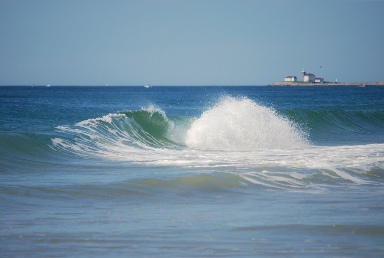Wednesday, September 16, 2020 2:34:14 PM
https://search.nih.gov/search?utf8=%E2%9C%93&affiliate=nih&query=Arrayit&commit=Search
From 2017
Sensitive Genotyping of Foodborne-Associated Human Noroviruses and Hepatitis A Virus Using an Array-Based Platform
https://www.ncbi.nlm.nih.gov/pmc/articles/PMC5621023/
Arrayit is referred to 16 times in this one article as vendors of equipment and supplies.
There are many more. This is about VERIFICATION, so I have included several excerpts from some NIH articles. They are highly technical and way over my head, but provide VERIFICATION! lol.
Phenotyping of extracellular vesicles using the EV Array
Production of microarrays
Microarray printing was performed on a SpotBot® Extreme Protein Edition Microarray Printer with a 946MP4 pin (ArrayIt Corporation, CA, USA). As a positive control 100 µg/mL of biotinylated human IgG was printed and PBS with 5% glycerol was used as negative control. Antibodies were printed on epoxy-coated slides (75.6 mm×25.0 mm; SCHOTT Nexterion, DE), which were left to dry at room temperature overnight prior to further analysis.
For microarray construction, the oligonucleotide capture probes were purchased with a 5'-amino-C6 linker modification (Eurofins Genomics) to allow covalent binding to the slide surface. Probes were spotted in duplicate at a final concentration of 50 µM on ArrayIt® SuperEpoxy2 microarray slides (Arrayit Corporation, Sunnyvale, CA, USA). As a positive control for the hybridization reaction, a synthetic 24-mer oligonucleotide probe with a 5'-amino-C6 and 3'-biotin modification (InDevR) was spotted at a final concentration of 500 nM [61,62]; this biotinylated control oligonucleotide did not have any sequence homology to any NoV or HAV strain. The microarrays were manufactured with an approximate spot diameter size of 200 µM and a center-to-center spacing of 480 µM (Arrayit). The microarray slides were stored in a desiccator until further use.
To achieve rapid microarray hybridization, amplicons were subjected to a digestion with 15 U of lambda exonuclease (Thermo Fisher Scientific, Waltham, MA, USA) to generate single stranded DNA by digesting the non-complementary strand with a 5' phosphorylated modification (Figure 3), as described in previous studies [61,62,65]. The exonuclease digestion was performed in a final volume of 25 µL for 30 min at 37 °C, then incubated for 10 min at 95 °C, followed by an immediate addition of 25 µL of 2× Arrayit Hybridization Buffer (Arrayit). The hybridization mixture was applied to the 24-array slides, placed on a 96-well microarray microplate, which was then covered with foil. The mixtures were further incubated for 3 h at 37 °C and 350 rpm using an Array Plate Multi-Well Hybridization Station (Arrayit). All arrays were washed with Hybridization Wash Buffer A, followed by Wash Buffer B, and Wash Buffer C (Arrayit) for 5 min each at 37 °C and 350 rpm. The slides were finally dried by centrifugation using a Microarray High Speed Centrifuge (Arrayit).
Is the NIH and/or other government agencies using ARYC's technology and supplies in the fight against Covid-19?
Glidelogic Corp. Becomes TikTok Shop Partner, Opening a New Chapter in E-commerce Services • GDLG • Jul 5, 2024 7:09 AM
Freedom Holdings Corporate Update; Announces Management Has Signed Letter of Intent • FHLD • Jul 3, 2024 9:00 AM
EWRC's 21 Moves Gaming Studios Moves to SONY Pictures Studios and Green Lights Development of a Third Upcoming Game • EWRC • Jul 2, 2024 8:00 AM
BNCM and DELEX Healthcare Group Announce Strategic Merger to Drive Expansion and Growth • BNCM • Jul 2, 2024 7:19 AM
NUBURU Announces Upcoming TV Interview Featuring CEO Brian Knaley on Fox Business, Bloomberg TV, and Newsmax TV as Sponsored Programming • BURU • Jul 1, 2024 1:57 PM
Mass Megawatts Announces $220,500 Debt Cancellation Agreement to Improve Financing and Sales of a New Product to be Announced on July 11 • MMMW • Jun 28, 2024 7:30 AM










